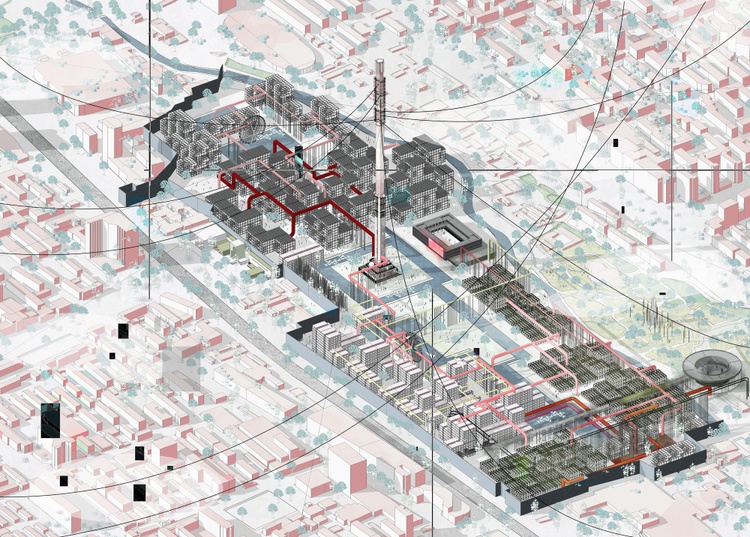Why CDA Architects Are Leaders in Architectural Layout and Technology
Why CDA Architects Are Leaders in Architectural Layout and Technology
Blog Article
An Extensive Introduction of Architectural Styles and Their Influence on Modern City Preparation and Development
Building styles have long offered as a mirror to the societal worths and technological innovations of their time, playing a critical function in shaping modern-day city planning and growth. From the magnificence of Neoclassicism to the practical method of Brutalism, each style has introduced special concepts that affect metropolitan visual appeals and capability.
Historic Overview of Architectural Styles

As societies transitioned through the Center Ages, Gothic architecture emerged, identified by its verticality and complex detailing, matching the spiritual goals of the era. The Renaissance noted a rebirth of classic ideals, combining art and style in innovative manner ins which affected subsequent designs throughout Europe.
:max_bytes(150000):strip_icc()/Buildingdesigns-GettyImages-912482942-db55b3af711044a3a42ad1040c6711a9.jpg)
Today, architectural styles proceed to advance, driven by globalization and sustainability issues, showing a vibrant interplay in between heritage and advancement. This historic review highlights the value of architecture as a mirror of social advancement and as a catalyst for metropolitan growth.
Secret Architectural Styles Explained
The variety of building designs reflects the myriad influences that form our constructed environment, each symbolizing unique features and cultural importances. Secret building styles include Timeless, Gothic, Baroque, Innovation, and Postmodernism, each standing for unique historical contexts and aesthetic approaches.
Timeless architecture, rooted in ancient Greece and Rome, emphasizes symmetry, proportion, and making use of columns (cda architects). In comparison, Gothic design, prospering between Ages, is characterized by pointed arches, ribbed vaults, and flying buttresses, creating an angelic high quality in cathedrals. Baroque architecture, emerging in the 17th century, is marked by grandeur, elaborate ornamentation, and a dynamic interaction of light and shadow
Innovation, which acquired momentum in the early 20th century, prioritizes function over form, using brand-new products like steel and glass to develop minimal structures. Postmodernism, responding against the austerity of Innovation, welcomes eclecticism and historic referral, often incorporating spirited elements and paradox.

Influence On Urban Planning
In shaping the growth of cities, architectural designs considerably affect urban preparation decisions. The selection of architectural style commonly dictates the appearances, performance, and total character of metropolitan environments. Modernism, with its focus on minimalism and capability, encourages open areas and the assimilation of technology, shaping city formats that focus on efficiency and ease of access. Alternatively, traditional styles may highlight historic conservation, bring about urban styles that preserve social heritage and advertise pedestrian-friendly environments.
Furthermore, building designs can influence zoning laws and land make use of policies. Urban planners must consider the prevailing architectural trends when designing districts, making sure that brand-new advancements balance with existing structures. This consideration fosters cohesive metropolitan landscapes and boosts neighborhood identity.
The implementation of specific architectural designs can additionally influence socioeconomic elements within a city. For instance, high-end modern layouts may attract affluent homeowners and businesses, leading to gentrification, while extra budget-friendly housing solutions could focus on useful and lasting layouts to fit diverse populaces. Ultimately, browse around this web-site the interaction between building styles and urban preparation creates vibrant cities that reflect both historic context and modern needs, forming the lived experiences of their residents
Sustainability and Modern Style
Architectural designs play an essential role in addressing modern challenges, specifically in the realm of sustainability. As metropolitan areas broaden and ecological issues intensify, contemporary style progressively welcomes sustainable style concepts that focus on energy efficiency, source preservation, and marginal ecological influence.
Contemporary building motions, such as biophilic style and environment-friendly style, supporter look at this web-site for frameworks that harmonize with their environments, utilizing natural materials and advertising biodiversity. These designs typically include renewable resource sources, such as solar panels and wind generators, to lower reliance on nonrenewable fuel sources and lower carbon footprints.
In addition, the assimilation of advanced innovations, such as wise structure systems, boosts power management, optimizing source use while making certain occupant comfort. Innovative water administration methods, consisting of rain harvesting and greywater recycling, further add to lasting metropolitan settings.
Especially, sustainability expands past ecological problems; it incorporates social and financial measurements. By promoting area wellness and promoting inclusivity, contemporary architectural styles line up with lasting advancement goals. The development of architectural practices proceeds to form resilient cities that not only meet the demands of the present but additionally guard the future for generations to come.
Area Engagement in Design
Area involvement in design acts as an essential bridge between try this web-site engineers and the populaces they serve, ensuring that the built environment shows the needs and desires of its individuals. This collective process welcomes community participants to contribute their understandings and preferences, cultivating a sense of possession and obligation toward the areas they occupy.
Effective neighborhood engagement uses different approaches, such as workshops, surveys, and public online forums, to collect varied perspectives. These methods facilitate a two-way discussion, enabling designers to comprehend local contexts while equipping homeowners to articulate their worries and wishes. This inclusivity not only improves the layout quality but additionally promotes social equity by resolving the distinct difficulties encountered by marginalized groups.
In addition, community engagement can cause innovative services that may not arise in a traditional style procedure. By incorporating neighborhood knowledge and cultural values, engineers can develop spaces that resonate more deeply with individuals, enhancing use and sustainability. Ultimately, prioritizing neighborhood involvement in layout processes results in settings that support social communications, support wellness, and reinforce community connections, therefore playing a crucial function fit contemporary metropolitan landscapes.
Final Thought
Building styles have actually profoundly influenced modern city planning and development, reflecting evolving cultural and technical contexts. The integration of historical appearances with contemporary needs fosters urban environments that focus on sustainability and area involvement. As cities remain to grow and adapt, the ongoing discussion in between building heritage and contemporary style concepts will certainly stay vital in producing inclusive, vibrant rooms that enhance lifestyle and promote social equity. The future of city growth depend upon this harmonious equilibrium.
Report this page